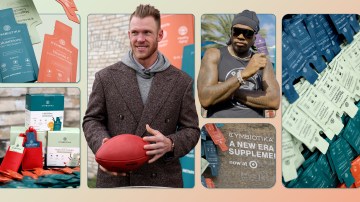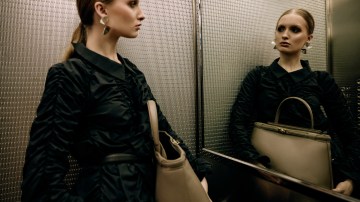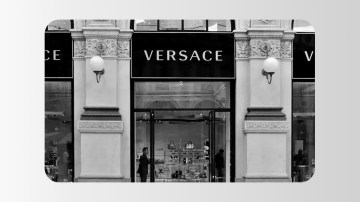Since Glossier first entered the fragrance category in 2017, fans have speculated on when the brand might follow up on its debut scent, the hit musky-iris Glossier You. The answer came seven years later when Glossier finally launched another eau de parfum, but rather than begin a new scent pillar, Glossier went back to an old favorite: You.
The brand launched two flankers, You Rêve and You Doux, in October 2024, followed by You Fleur in March. Sticking by You’s original DNA appeared to pay off: According to Glossier, Rêve and Doux represented the biggest launch in Glossier’s history. The two scents generated $1 million in DTC and retail revenue in its first 24 hours, excluding sales at Sephora.
“We wanted to stay true to You’s original idea of being ‘You but better,’ a skin-enhancing scent for those who want to be themselves,” said Glossier CMO Kleo Mack. “While Rêve, Doux and Fleur are technically flankers, we think of them more as different ‘Impressions of You.’”
If original launches like You are blockbusters, flankers are the sequels of the perfume industry. The history of the flanker concept goes back to launches like 1975’s Nina Ricci Signoricci 2, a redux of 1966’s Signoricci. And just as constantly expanding film universes are now standard in the movie industry, releasing a new flanker every year is a common practice for designer and masstige lines as conglomerates like L’Oréal and Coty aim to keep scents alive for new generations and demographics.
“[Flankers] bring visibility to the brand,” said Dsm-Firmenich principal perfumer Dora Baghriche, the perfumer behind both the original You, along with Frank Voelkl, and the new You Fleur. “Each brand has what we call a portfolio, and they want to make sure that their portfolio is complete enough to reach the maximum number of consumers.”
But flankers need to hold up in a market where perfume consumers increasingly crave novelty and artistic expression, lest a stream of repetitive rereleases dilute the brand value.
“[Flankers] are a pure commercial strategy, because you don’t need to redevelop the bottle. You just change the color, and you keep the brand awareness, which is already here. So usually you do flankers when your brand is quite major and you don’t want to take a risk,” said Johanna Monange, founder of bespoke perfume house Maison 21G and former creative director for International Flavors and Fragrances. “When you start to do flankers, when you start to do promotion, you’re killing your brand in the long term. You’re making short revenue, but you kill brand equity.”
Monange said that while major brands launch a new scent only every three to five years, flankers are released every year, with flankers making up about 30-40% of their overall production. Flankers allow brands to adapt a launch that originally targeted a European market to better suit Asian perfume tastes, she said. Or, they can update a scent to match current trends like today’s craze for both light-concentration body mists and heavy-duty extrait de parfums.
Though flankers are de rigueur in designer or mass fragrance lines, they are almost nonexistent in true niche brands. Carlos Huber, fragrance developer and founder of niche fragrance brand Arquiste, said that, from a creative standpoint, he finds flankers an exciting challenge. But perfume launches are rarely driven purely by creative instincts; rather, commercial demands are always at play.
“Flankers are mostly launched and requested or demanded by big retailers,” he said. “So the brands that you are seeing launching flankers, it’s because they’re at Sephora, they’re at Ulta. They’re at larger department stores that are constantly requesting from the brands for activations and for more and more and more.”
For a true niche brand that is speaking to a narrow audience, launching flankers can run the risk of cannibalizing sales of an existing scent, Huber said. And more critically, they can alienate consumers looking for the curated vision a niche brand is meant to offer.
“For a niche brand, we’re looking for very specific, very special experiences. When it feels too close to that department store gift set kind of format, it starts feeling commercial,” he said. “As much as we may like all these variances, these flankers sometimes can become too much, and it could dilute the message of the overall hero product.”
More recently, some niche brands are experimenting with ways to launch flankers while keeping true to their artistic vision, particularly brands that are eyeing expansion and outside investment. French niche brand Ex Nihilo, which sold a minority stake to Eurazeo in 2024, launched an extrait de parfum version of its best-selling scent Fleur Narcotique in 2022. Fellow French house Matiere Premiere, which received a minority investment from Kering Beauté in 2024, launched an extrait de parfums collection of scents in its core collection, like Radical Rose and Santal Austral, that same year.
In a market where niche sensibilities are becoming mainstream, Monange believes the big conglomerates may divert their resources away from flankers to more exclusive, private-label lines. In September, Lancôme launched a new Absolue Les Parfums Collection, while in October, Coty unveiled an expanded range to the higher-end Atelier des Fleurs by Chloé collection.
“They put all their energy into competing with niche brands,” she said. “They’re pushing to sell a higher-cost [scent] and a more natural, better formula with a stronger signature. It’s more energy into the exclusive collection and less into the flankers.”
While flankers rarely stand the test of time, with many coming on and off the shelf to make room for constant new releases, there are occasions when a flanker becomes a pillar unto itself. In its earnings call for the first quarter of fiscal year 2025, Coty stated that Marc Jacobs Daisy Wild, a fruity 2024 flanker to 2007’s hit Daisy, had already cracked the top three feminine fragrances in the U.K. and Germany less than a year into its launch.
“What made a difference from all the ideas that were presented [for Daisy Wild] was the story around the banana. It’s an ingredient or a fruit that is so common, you know, and it wasn’t really used in a fine fragrance, or even in a niche at the time,” said Givaudan vp of perfumery Adriana Medina, the perfumer behind Daisy Wild along with Sonia Constant. In 2025, Coty launched Daisy Wild Eau So Intense, and Medina said a third addition to the Daisy Wild family is already on the way.
Daisy Wild’s unique banana flower note has helped it stand out among dozens of other Daisy flankers. The speed at which flankers are typically produced does not always leave time for such creativity, however.
“Sometimes you close on the first scent, and you start working on the flanker right away,” said Medina.
For her part, Dora Baghriche was pleased to see Glossier take its time in launching flankers to You. She said she and Voelkl began working on the flankers to You two years after the launch, with the flankers spending another five years in development. She would like to see other brands return to such a pace.
“[You Fleur] was a long process, which is the way we worked in perfumery 25 years ago. That’s what I like. We have a success, we don’t rush in bringing another brother or sister into this family,” she said of Fleur’s development. “The [brands] who will slow down a little bit and really make statements, take risks and act like they were alone in the market will win.”




